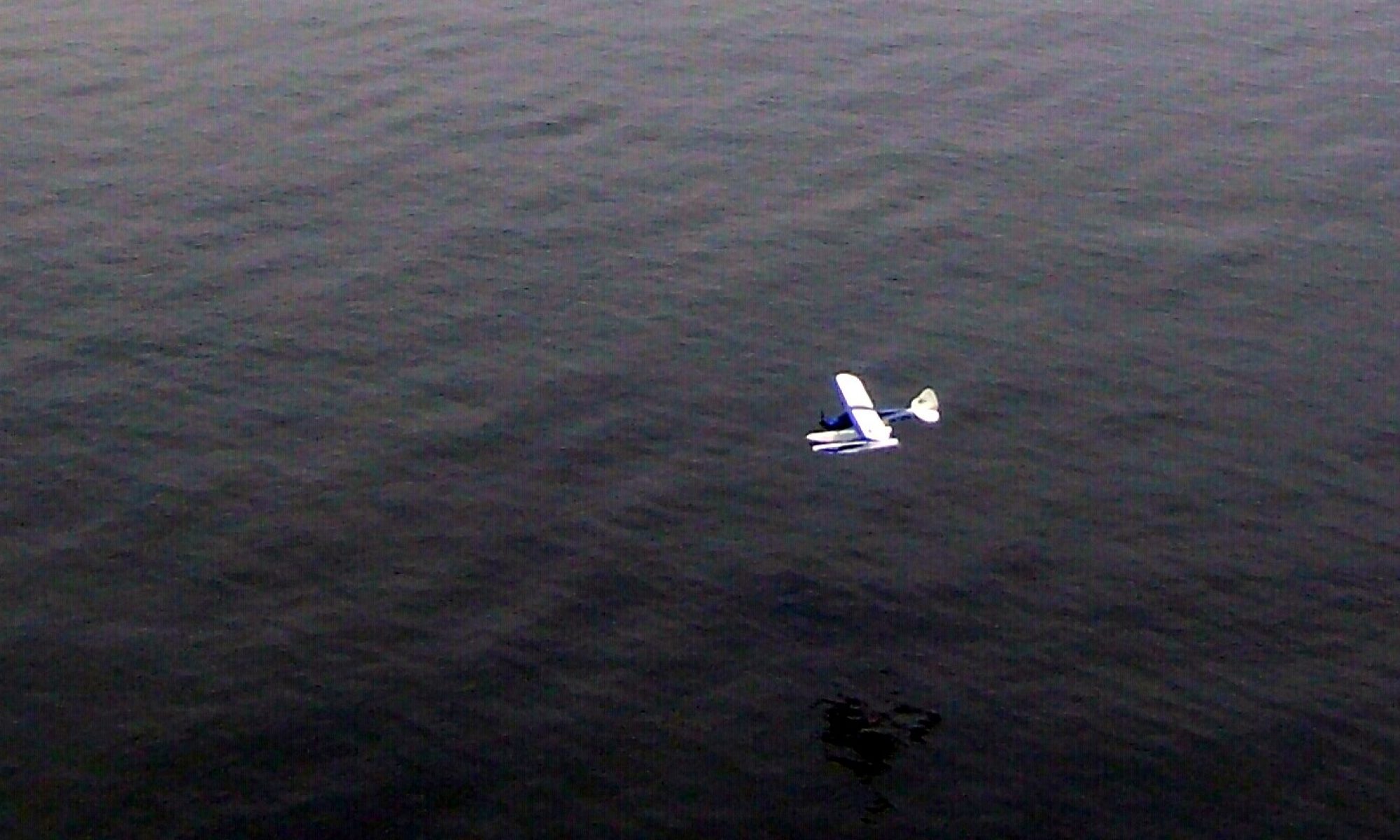Turbo Timber 2M SWS – Part Six
With the Turbo Timber ready to fly I made an exception to my usual standard for maiden flying weather and headed to the field on an exceptionally warm (72F in early March in Indiana) and rather windy day with solid 10-15mph winds with occasional gusts to probably 20-25.
I put in two flights, with each flight lasting around 7 minutes of actual wheels up air time. I was very happy to see that both flights ended with batteries at above 60%! Both flights were using my SMC 5900 HV packs. I used a mix of throttle settings and manuevers with a fair amount of IMAC inspired aerobatics. Only one real full throttle pull straight up and a couple of hover/prop hangs just to see how it handled it. The plane did fine but my reflexes were a bit rusty with the gusty winds making things a bit more challenging.
My first impressions is that she is fairly fast. The plane looks and feels very slick. She picks up speed quickly and seems most comfortable to fly at a slightly higher pace than just your average trainer/high wing STOL in my experience. She will slow down quite nicely with some flaps applied. I’ll get a better feel for that when I can fly minus the winds at some future point. Maintaining a comfortable speed at around 60% throttle seems to be a very economical cruise mode from what I can see in telemetry… drawing 10-30A which would result in 10 minute plus flight times if maintained! This speed doesn’t look “slow”, nor does the plane feel sluggish if your just maintaining level flight and making standard turns. I will add my GPS module soon and get some speed readings. She fairly jumps when you hit the throttle and is quite quick to all appearances. Pulling straight up and rolling in throttle results in a nice steady vertical line if that is what you want.
After the first 7 minute flight, I was amazed to see my meter report a bit over 60% of capacity still in the batteries. My timer was set for 5:30 but I flew past it, expecting the battery to end up closer to 25-30% but now I will push it up to 6:30 and try my 5300mah HV packs to see where the charge state ends on those. Telemetry reported peak draws at 70 amps for one flight and 75 on the other while in flight so the ESC should be capable of handling that with ease. On the ground, restrained you can hit 90 or a bit more. That’s running a Xoar 15×8 E Prop which is extremely similar in shape to the supplied wood prop. I wouldn’t be suprised if the supplied is also made by Xoar, as I understand they are a huge manufacturer in the field.
With those peak currents the ESC is reporting as high as 1400 watts and over 9000 rpm. Considering the motor is spec’d for 900W max, I wouldn’t want to hold that for a long period, but the climb rate is quite impressive so not sure why you would need to. I see one near vertical climb I made which netted 290ft of vertical climb in 9 seconds… so holding that for another 20 seconds is going to put you at 1000 feet and the airplane is going to be looking pretty small! With any moderation at all, I don’t think the motor or ESC is going to have any heating issues… but we’ll see when the temps move from 72F or so to 90F here in a few months!
The receiver reported voltage stayed between 7.5 and 7.32 through both flights with the BEC temp running from 85-130F so I am happy to report that the BEC isn’t showing any strain in spite of a lack of any airflow in the area where the ESC is mounted. I may eventually add some exit area just to encourage some modicum of air passing the ESC and maybe I’ll remount the ESC so the heat sink won’t be wrapped in hook and loop material. I don’t understand wrapping a blanket around that to hold it when it has mounting tabs built in!
With only 35 or so frame losses during the flying portions of each flight, the receiver seems to be getting good signal… though it occurs to me I have an extra remote or two laying around I might add just so when I do some glider tows to extreme altitude later on, I have have confidence in my control of the airplane. Though there are two antennas, the 8360 is just one receiver so having a remote receiver I can mount elsewhere in the plane seems like cheap insurance.
Mental notes from the first flight include:
- Possibly adding a bit more down elevator to the flap mix.
- Bringing down the Elevator rates. Mid rate had enough throw to cause a snap… something I normally reserve for a high rate setting.
- Adding a remote receiver for “signal insurance”
- Adding a GPS module (which I already own) to get some readouts on speed
That’s what I can report for now. So far she is flying well and I am enjoying it. Lots more fun and experimentation with crow, full span flaps, reverse thrust braking etc… coming during future flights!
Here’s a quick “chapter guide” if you want to jump to any of the other posts on this aircraft:
Part 2 – Inspection and possible modifications
Part 3 – Assembly and modifications
Part 4 – Radio setup, modifications, and repairs
